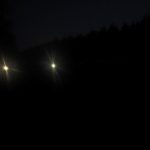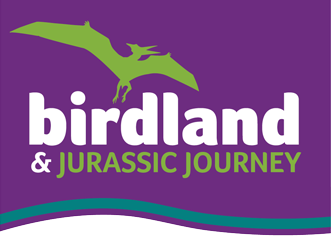1st November 2013 – Winter is here

We are now in full winter mode as from today we start on winter hours, with last admission at 3 and the park closing at 4 to the public.
With the onset of winter the daily routine of the keepers begins to change from that of the Summer. First off it is now too dark when we arrive at 7.30 to go and check our stock so we head straight to the kitchen to prepare feeds before heading out when its light to count heads.
 Early morning view of the aviary boulevard
Early morning view of the aviary boulevard
We are now starting to get some serious leaf fall from the trees and these must be tidied up each day before opening. Our groundsman John goes round blowing all the leafs into a neat pile before driving our sweeper around to collect them all up. The keepers too have to tidy, it’s now taking me an extra 20 minutes to clean the penguins each day as I first have to get rid of all the leafs. Leafs must also be removed from aviary roofs, especially netted ones as too much weight makes for snapped roofs.
 This picture was taken 5 minutes after sweeping
This picture was taken 5 minutes after sweeping
With cold weather comes far more cleaning of sheds for the keepers. As we have many species from more tropical climates they have to be shut in every night with heat to keep warm. Birds inside for 12 or so hours equals lots of droppings so the sheds must be cleaned regularly, with fresh shavings and clean water to be provided. We also have to regularly service the source of heat, with heat bulbs being changed, thermostats adjusted accordingly and perching provided at the right height.
We rotate the daily duty of cleaning the larger sheds between the 4 of us. If you can imagine a shed with 16 flamingos shut in, another with 14, a third shed with 5 pelicans and the final shed with 2 cranes, 3 Spoonbills and 31 Ibis you can imagine the mess (& probably the smell). These sheds have to be washed daily and it can take up to an hour to do this.
From about 3.30 onwards we start to shut birds in for the night. This will be species such as the Hornbills & Touracos, from warmer regions, and some of the waders who with their long legs are more susceptible to frostbite. For the first few nights it may take, 2, 3 or even 4 staff to get the birds in but after a few nights they realise whats happening and shut themselves in. Of course some birds don’t like going in and play up, if the forecast is mild they may be left but if its going to be chilly they may have to be caught to be shut in.
 The Pelicans cosying up in their shed
The Pelicans cosying up in their shed
 The Caribbean Flamingos put themselves in
The Caribbean Flamingos put themselves in
With birds going in some of the talks are now stopping for the winter. The main one affected is Pelican Feeding at 3.15. This no longer takes place as the birds are feed indoors a) to get them to go in and b) if they feed then are walked in they regurgitate their food.
We are also much busier in the nature area, topping up feeders daily as the colder weather attracts more native species to the feeders. Fingers crossed for some more unusual species.
It’s Halloween week this week so we have been running a special quiz trail based on some of the myths and legends surrounding birds. The quiz runs until Sunday so there’s still time to come and find out who the Undertaker bird is and what bird sucks blood!

Thanks for reading


